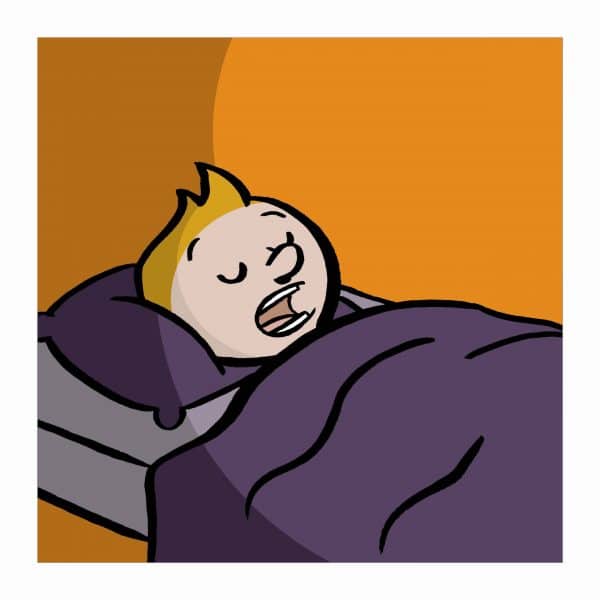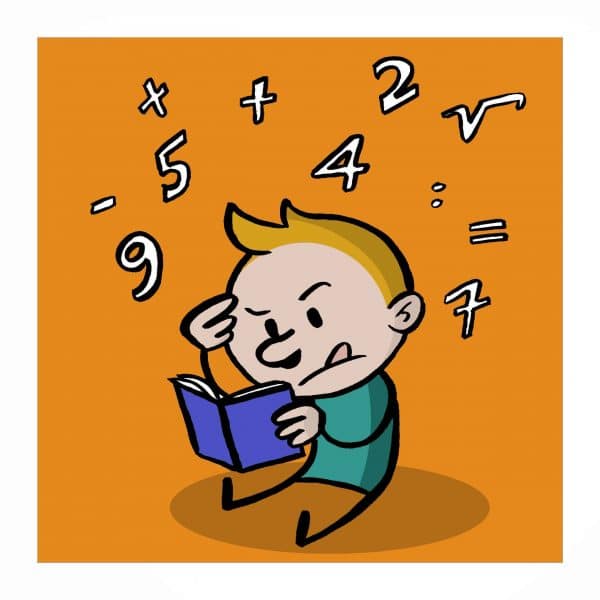
La respiration buccale chez l’enfant, facteur de précarisation scolaire et socio-familiale.

Pour rappel, depuis la nuit des temps, Homo sapiens a toujours respiré par le nez durant son sommeil.
La respiration nasale constitue un facteur essentiel au bon développement de la face du nourrisson, du développement neurocognitif et protège dès le plus jeune âge son système cardio-vasculaire.
Respirer par le nez, c’est capté dans l’air extérieur oxygène et azote, mais c’est aussi et surtout auto-inhaler le monoxyde d’azote (NO), un gaz aux fonctions vitales et essentielles, produit en grande quantité dans les sinus paranasaux.
Dormir en respirant chroniquement par la bouche aura comme conséquences :

Perturbation du développement maxillo-facial et de la statique dento-faciale;
Mauvais positionnement de la langue avec troubles de la parole et de la déglutition;
Sécheresse de la bouche et des lèvres avec impact sur l’hygiène buccale et la santé dentaire augmentant le risque de carie dentaire, de gingivite et d’halithose.
Troubles du comportement, de l’attention ;
Troubles de l’apprentissage, des processus de mémorisation ;
Anomalie de la statique cervico-céphalique ;
Réduction des performances à l’effort ;
Incidence accrue de maladie asthmatique suite à la perte du « filtre à particules » ;
Risque d’apparition d’un SAOS (Syndrome d’Apnées Obstructives du Sommeil) à l’âge adulte accompagné du cortège des comorbidités cardiovasculaires et métaboliques.
Dès lors, le dépistage constitue la meilleure politique de prévention qui soit pour assurer une santé durable.
Promouvoir la santé mentale et physique de nos enfants et petits-enfants nécessite l’investissement de tous en matière de dépistage.
Quels sont ces outils de dépistage à notre disposition ?
Les plus anciens, les plus aisés à mettre en œuvre, les moins chers, ce sont nos yeux et nos oreilles !
Parents, grands-parents, enseignants, il ne coûte rien d’aller observer nos enfants pendant leur sommeil et de s’assurer qu’il respire bien par le nez. La respiration buccale avec ou sans ronflement – en dehors d’épisode infectieux – doit pousser l’entourage de l’enfant à consulter.
Il existe des outils technologiques performants de dépistage facilement à mettre en œuvre à domicile (Brizzy – Nomics).
Recouvrer une respiration nasale nocturne, c’est retrouver ses forces mentales pour lutter contre l’échec scolaire.

Corriger ce trouble nécessite l’intervention de professionnels de santé liés aux sciences dentaires, médicales et rééducatives : la thérapie myofonctionnelle représente un élément essentiel pour pérenniser les acquis.
Plus tôt sera identifié le trouble, plus vite sera mise en œuvre la thérapeutique curative et moindres seront les conséquences au long cours.
Références :
Increased oxygen load in the prefrontal cortex from mouth breathing
Mouth breathing in children with learning disorders
Conclusion : Based on this study, we concluded that children with adenotonsillar hypertrophy have more learning difficulties when compared to children without such hypertrophy.
Influences of mouth breathing on memory and learning ability in growing rats
Conclusion : the functional deterioration of the respiratory system during the growth phase exerts a substantial effect on the growth and development of the central nervous system.
Nasal Respiration Entrains Human Limbic Oscillations and Modulates Cognitive Function
Our findings provide a unique framework for understanding the pivotal role of nasal breathing in coordinating neuronal oscillations to support stimulus processing and behavior
Deficits in working memory, reading comprehension and arithmetic skills in children with mouth breathing syndrome: analytical cross-sectional study
Conclusion : Children with mouth breathing have low academic achievement and poorer phonological working memory than controls. Teachers and healthcare professionals should be aware of the association of mouth breathing with children’s physical and cognitive health.
Association between breastfeeding and breathing pattern in children: a sectional study
J Pediatr (Rio J). 2014;90(4):396-402
Conclusion: an increased duration of exclusive breastfeeding lowers the chances of children exhibiting a predominantly oral breathing pattern.
Association Between Breastfeeding and Childhood Breathing Patterns: A Systematic Review and Meta-Analysis.
Conclusion : Based on this review, we found that the frequency of normal nasal respiration increases with the duration of breastfeeding.
Influence of the breathing pattern on the learning process: a systematic review of literature
Conclusion : This systematic review has shown that mouth breathers are more likely to have learning difficulties than nasal breathers.
Oral breathing and speech disorders in children
Conclusion : Mouth breathing can affect speech development, socialization, and school performance. Early detection of mouth breathing is essential to prevent and minimize its negative effects on the overall development of individuals.
Association between Mouth Breathing and Atopic Dermatitis in Japanese Children 2–6 years Old
In preschool children older than 2 years, both MBD and MBS may be associated with the onset or development of atopic dermatitis.
Breastfeeding and Risk of Habitual Snoring in Children: A Meta-analysis.
This meta-analysis of observational studies indicates that breastfeeding for a long time is associated with reduced risk of habitual snoring in children. The finding needs to be investigated in well-designed prospective studies.
Environmental tobacco smoke exposure and risk of habitual snoring in children: a meta-analysis
Exposure to between environmental tobacco smoke (ETS), in particularly prenatal tobacco smoke exposure and maternal smoking, is associated with an increased risk of habitual snoring (HS).
Growth and mouth breathers.
Conclusions : Mouth breathing should be considered as a potential cause of growth retardation in children; pediatricians should assess these patients in a broad manner.
Oral health status of children with mouth breathing due to adenotonsillar hypertrophy
Conclusions : The oral health status of mouth breathing in children with adeno-tonsillar hypertrophy was poor. To reduce the risk of dental caries and periodontal disease among these children, regular dental follow-up and preventive programmes for oral health are needed.
Influence of habitual mouth breathing on taste sensation
Conclusions : Mouth breathing habit poses a risk for taste deterioration without affecting salivary secretion and olfactory function.
Postural disorders in mouth breathing children: a systematic review
Conclusions : The review provides low evidence that mouth-breathing pattern in children between the ages 5–14 years is associated with postural deviations.
Mouth breathing, another risk factor for asthma: the Nagahama Study
Conclusion : Mouth breathing may increase asthma morbidity, potentially through increased sensitization to inhaled allergens, which highlights the risk of mouth‐bypass breathing in the ‘one airway, one disease’ concept. The risk of mouth breathing should be well recognized in subjects with allergic rhinitis and in the general population.
Implications of mouth breathing on the pulmonary function and respiratory muscles
Effect of left nostril breathing in hypertensives
BP and pulse rate can be decreased in a non-pharmacological way. Hence this technique can be used as a regular practice for combating the stress and strain of everyday life.
